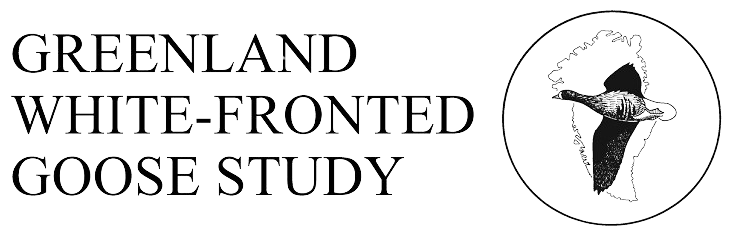History and status
Probably now abandoned as a regular wintering site, but the history of these birds is very confusing. It seems highly likely that the birds which frequented the Tankerness area of eastern Mainland formerly moved out onto the other islands, most notably around Meikle Water on Stronsay, but also using resorts on Shapinsay and doubtless other islands. It may be the case that the deteriorating conditions responsible for the long term decline in that flock caused the birds to search for alternative feeding areas further and further from their original locus, but we shall never know. Although often challenging to arrange coverage by goose counters, especially on the smaller islands, it is thought that this group is not longer regular, with no reports at all from 2004/5, 2005/6 and 2006/7, so it seems likely that this group has finally abandoned this area of Orkney.
Numbers always fluctuated widely between seasons here, strongly suggesting many unknown feeding resorts used by the flock. Nevertheless, it would seem (allowing for complete misses in some seasons and swelling of numbers with staging birds at passage times) that generally there were between 25 and 60 birds encountered regularly, usually on Stronsay from the early 1980s onwards.The last good count was of 41 at Meikle Water on 15th November 2004.
Maximum winter counts:Breeding success: No figure provided because of the small flock size and few data.
Feeding sites and habitat: The geese used stubble on the island in autumn but spent much of the winter on rough pasture and reseeded grassland. They frequently used the area about Meikle Water on the island.
Roosting sites: Almost certainly Meikle Water.
Habitat change: R&O considered that moorland reclamation was one of the causes of the declines in number of the flock in the 1970s, but there has been gradual agricultural ‘improvement’ of semi-natural habitats.
Aircraft disturbance: Disturbance from aircraft from the nearby civil airport at Kirkwall, which probably results in regular disturbance, although the regular nature of the disturbance and its orientation may enable some level of habituation. There has been a significant increase in air traffic since the 1980s associated with oil-related activities and the general increase in air traffic generally.
Hunting disturbance: R&O reported an increase in shooting in the area around the Mainland resorts of this flock which could in theory have lead to their disperal onto the islands, but there is no recent information on this. There has been a great increase in hunting of Greylag Geese on the islands in very recent year with the dramatic increases in their number which may have contributed to changes in abundance and distribution.
Agricultural disturbance: R&O reported increase in moorland reclamation on the Mainland, but there is little reason to think was a factor on Stronsay.
Site safeguards or disturbance refuge: None
SNH Natural Heritage Zones/Area: Orkney and Northern Caithness
Threats: Generally there has been little disturbance in the area, apart from that from regular farm work, and no attempts to drive geese from fields. There do not appear to be any problems associated with shooting. Continuing land claim may have contributed to the temporary abandoning of this site, although assuming it is the same flock using Stronsay, they seem to be able to settle at alternative feeding areas.
Linkages with other sites:
1. A leg ringed bird K74 was ringed in Eqalungmiut Nunaat, west Greenland in summer 1984 and which wintered on the Mull of Kintyre during winter 1986/87-1987/88 was found dead 1st January 1990 at Meikle Water.
2. A leg ringed bird K77 was ringed in Eqalungmiut Nunaat, west Greenland in summer 1984 and which wintered on Islay, 1985/86, was seen at Meikle Water on Stronsay with another unread leg ringed bird (K??) on 16th February and 30th March 1988. This bird returned to Islay in winter 1988/89 and was seen in the same area of the island until 2004/05.
